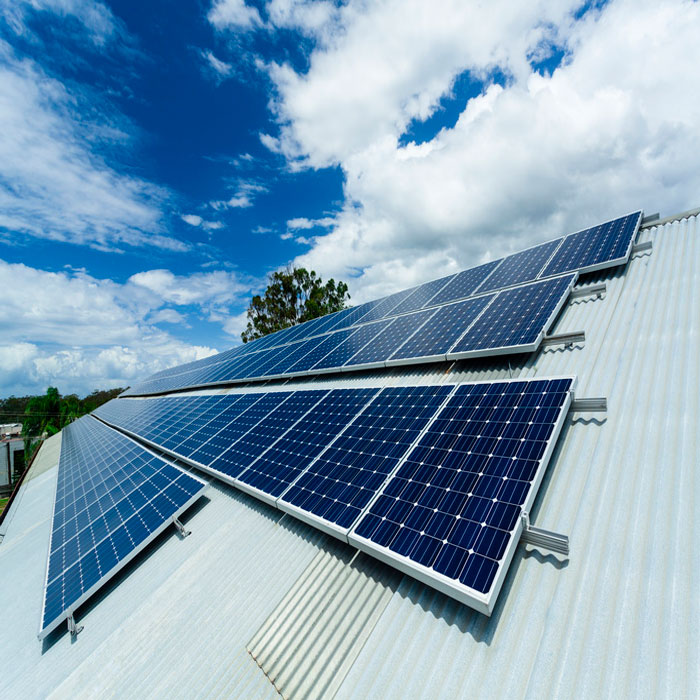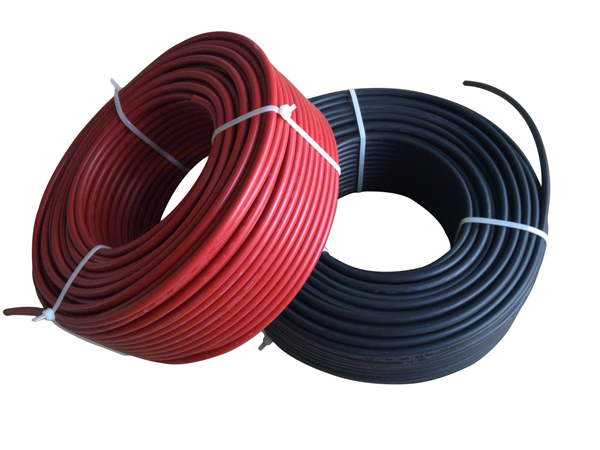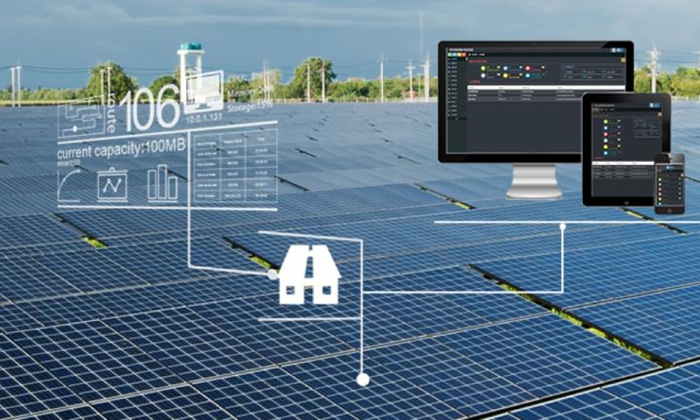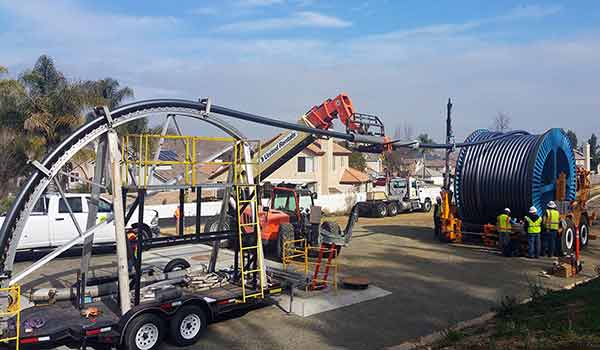Solar energy has emerged as one of the most promising sources of renewable energy, offering a sustainable solution to the world’s growing energy demands. Central to the efficient operation of solar power systems are solar photovoltaic (PV) cables. These specialized cables play a critical role in ensuring the safe and efficient transfer of electricity generated by solar panels. This comprehensive guide explores how solar PV cables work, their types, features, and importance in solar power systems.

Introduction to Solar PV Cables
Solar PV cables are designed specifically for connecting various solar power system components, including solar panels, inverters, and batteries. These cables are engineered to withstand harsh environmental conditions, such as extreme temperatures, UV radiation, and moisture. The primary function of solar PV cables is to conduct the direct current (DC) electricity generated by solar panels to the inverter, which then converts it into alternating current (AC) electricity for use in homes, businesses, and the grid.
Types of Solar PV Cables
Solar PV cables come in different types, each designed for specific applications within a solar power system. The main types of solar PV cables include:
1. DC Cables
DC cables are used to connect the solar panels to the inverter. They carry the DC electricity generated by the solar panels. DC cables are typically single-core, meaning they have a single conductor. They are designed to handle high current levels and are insulated to protect against electrical leakage and environmental factors.
2. AC Cables
AC cables are used to connect the inverter to the main distribution board or the electrical grid. These cables carry the AC electricity converted by the inverter. Unlike DC cables, AC cables are usually multi-core, containing multiple conductors to handle the three-phase AC power commonly used in commercial and industrial applications.
3. Battery Cables
Battery cables are used in solar power systems that include battery storage. These cables connect the batteries to the inverter or charge controller, facilitating the storage and release of electricity. Battery cables are designed to handle high currents and are often flexible to accommodate the various configurations of battery banks.

Key Features of Solar PV Cables
Solar PV cables are designed with several key features to ensure their durability, safety, and efficiency in solar power systems. These features include:
1. High UV Resistance
Solar PV cables are exposed to direct sunlight for extended periods. Therefore, they are manufactured with high UV resistance to prevent degradation caused by ultraviolet radiation. This ensures the cables maintain their integrity and performance over their lifespan.
2. Weather Resistance
Solar PV cables must withstand various weather conditions, including rain, snow, and extreme temperatures. They are made from materials that offer excellent resistance to moisture, heat, and cold, ensuring reliable performance in diverse climates.
3. Fire Resistance
Safety is paramount in solar power systems. Solar PV cables are designed with fire-resistant materials to minimize the risk of fire in the event of electrical faults or short circuits. This feature is crucial for protecting both the system and the surrounding environment.
4. Flexibility and Durability
Solar PV cables need to be flexible enough to allow for easy installation and routing through the solar power system. They must also be durable to withstand mechanical stress, such as bending and twisting, without compromising their electrical performance.
5. Low Smoke and Halogen-Free
In case of a fire, the cables mustn’t emit harmful smoke or gases. Solar PV cables are often made with low smoke and halogen-free materials, reducing the release of toxic fumes and enhancing safety for people and property.

How Solar PV Cables Work
The operation of solar PV cables involves several critical steps, from the generation of electricity by solar panels to its final delivery for use. Understanding how these cables work within a solar power system provides insight into their importance and functionality.
1. Generation of Electricity
Solar panels, also known as photovoltaic (PV) modules, generate electricity by converting sunlight into direct current (DC) electricity through the photovoltaic effect. This process involves the absorption of photons by semiconductor materials, such as silicon, within the solar cells. When photons hit the solar cells, they knock electrons loose from their atoms, creating an electric current.
2. Transfer of DC Electricity
The DC electricity generated by the solar panels is transferred through DC cables. These cables are typically connected in series to form a string, allowing the voltage of the individual panels to add up while maintaining the same current. This configuration is crucial for optimizing the efficiency of the solar power system.
The DC cables are routed from the solar panels to a junction box or combiner box, which consolidates the electricity from multiple strings of solar panels. From the junction box, the electricity flows through larger DC cables to the inverter.
3. Inversion of DC to AC Electricity
The inverter is a critical component in a solar power system, responsible for converting the DC electricity generated by the solar panels into AC electricity, which is the standard form of electricity used in homes and businesses. The DC cables connect the output of the junction box to the input of the inverter.
4. Transfer of AC Electricity
Once the inverter converts the DC electricity to AC electricity, the AC cables take over. These cables connect the output of the inverter to the main distribution board or the electrical grid. In residential systems, the AC cables typically connect to the home’s electrical panel, where the electricity is distributed to various circuits for use in appliances, lighting, and other electrical devices.
5. Battery Storage (Optional)
In solar power systems with battery storage, battery cables play a crucial role. These cables connect the batteries to the inverter or charge controller, enabling the storage of excess electricity generated by the solar panels. When the solar panels are not generating electricity, such as during nighttime or cloudy days, the stored electricity in the batteries can be used to power the home or business.

Importance of Solar PV Cables
Solar PV cables are essential for the safe and efficient operation of solar power systems. Their importance can be summarized in several key points:
1. Safety
Safety is a paramount concern in any electrical system. Solar PV cables are designed with high-quality insulation, fire resistance, and low smoke and halogen-free materials to minimize the risk of electrical faults, fires, and the release of harmful fumes. Properly rated and installed PV cables ensure the safe operation of the solar power system.
2. Efficiency
The efficiency of a solar power system depends on the quality and performance of its components, including the PV cables. High-quality solar PV cables with low resistance ensure minimal power loss during the transfer of electricity from the solar panels to the inverter and the grid. This maximizes the overall efficiency and energy yield of the system.
3. Durability
Solar power systems are typically designed to last for 25 years or more. Solar PV cables are built to withstand harsh environmental conditions, including UV radiation, extreme temperatures, and moisture, ensuring their durability and longevity. Reliable PV cables reduce the need for frequent maintenance and replacements, contributing to the system’s long-term performance.
4. Flexibility
Solar PV cables need to be flexible enough to allow for easy installation and routing through the solar power system. Flexible cables simplify the installation process, reduce the risk of damage during installation, and accommodate various system configurations.
Installation and Maintenance of Solar PV Cables
Proper installation and maintenance of solar PV cables are crucial for the safe and efficient operation of a solar power system. Here are some key considerations for installing and maintaining PV cables:
1. Correct Sizing and Rating
Selecting the correct size and rating of PV cables is essential to ensure they can handle the current and voltage levels of the solar power system. Undersized cables can lead to overheating, power loss, and potential safety hazards. It is important to follow manufacturer recommendations and industry standards for cable sizing and rating.
2. Proper Routing and Protection
PV cables should be routed and secured properly to avoid physical damage and minimize the risk of electrical faults. This includes using appropriate cable clips, conduits, and protective covers to shield the cables from mechanical stress, UV radiation, and environmental factors.
3. Regular Inspection and Maintenance
Regular inspection and maintenance of PV cables are necessary to ensure their continued performance and safety. This includes checking for signs of wear, damage, or corrosion, as well as ensuring all connections are secure and free from oxidation. Any damaged or degraded cables should be replaced promptly to maintain the integrity of the system.
4. Compliance with Standards and Regulations
Solar PV cable installation must comply with local and international standards and regulations to ensure safety and performance. This includes adhering to electrical codes, using certified and approved cables, and following best practices for installation and maintenance.

Innovations in Solar PV Cables
Advancements in technology continue to drive innovation in solar PV cables, improving their performance, durability, and ease of installation. Some notable innovations include:
1. Smart Cables
Smart cables are equipped with sensors and monitoring capabilities to provide real-time data on the performance and condition of the solar power system. These cables can detect issues such as overheating, electrical faults, and degradation, enabling proactive maintenance and optimizing system performance.
2. Improved Insulation Materials
The development of advanced insulation materials has enhanced the durability and performance of solar PV cables. These materials offer better resistance to UV radiation, extreme temperatures, and environmental factors, extending the lifespan of the cables and improving safety.
3. Lightweight and Flexible Designs
New designs and materials have resulted in lighter and more flexible PV cables, simplifying the installation process and reducing the risk of damage during installation. These cables are easier to route through the solar power system, accommodating various configurations and layouts.
4. Enhanced Fire Safety
Innovations in fire-resistant materials and low smoke and halogen-free formulations have improved the safety of solar PV cables. These advancements reduce the risk of fire and minimize the release of harmful fumes, enhancing the overall safety of solar power systems.
Solar PV cables are a critical component of solar power systems, enabling the safe and efficient transfer of electricity generated by solar panels. Their specialized design and features ensure durability, safety, and performance in various environmental conditions. By understanding how solar PV cables work, their types, features, and importance, we can appreciate their role in harnessing the power of the sun to generate clean, renewable energy. As technology continues to advance, innovations in PV cables will further enhance the efficiency and reliability of solar power systems, contributing to a sustainable energy future.
